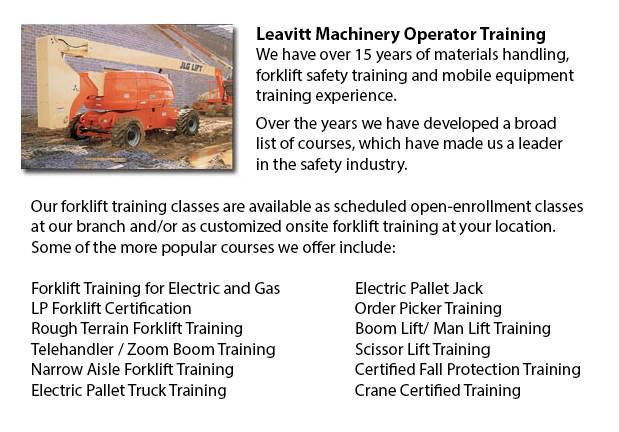
Aerial Lift Certification Kamloops - Aerial Lift Certification is for workers who require a thorough knowledge of aerial lift safety. Supervisors, maintenance workers and construction craftsmen require this training to make sure that inspectors and operators are qualified. State, federal and provincial rules require businesses to be certified to be able to carry out in-house aerial lift inspections.
Most workers who are needed to perform tasks at elevated level would usually utilize the same means to get to these required heights, regardless of the type of work that must be done. Scissor lifts and aerial lifts are the mechanized devices utilized to lift equipment and employees to elevated sites.
Bucket trucks called Cherry Pickers are aerial platforms that feature a supported boom and bucket. The main danger to making use of this type of platform is normally electrocutions, tip-overs and falls. Certification ensures that workers who utilize aerial lifts are trained correctly in order to safely work the equipment. Training also ensures that workers know how to maintain aerial work platforms in accordance with the manufacturer's instructions.
Training comprises the following lifts: Aerial lifts that are mounted to vehicles, Boom-supported aerial lifts and scissors lifts. Trainees would gain knowledge of the results and causes of aerial lift incidents, and will learn safe operating procedures. They would become technically competent in the different kinds of aerial lifts, as well as components and terms. From interpreting rated capacity charts to choosing the right aerial lift for the task, the certification program would provide workers with everything they must know to be able to safely perform their work.
Individuals who are assigned the job of inspecting aerial lift devices need to know how to check booms, gears, structural parts, operating mechanisms, functions and control systems, braking systems, power plants, attachments, shafts and pins, hydraulic, electric and pneumatic parts, operator aids and emergency safety devices, etc. Training would comprise the following: the inspector's role in lessening liability exposure and accidents; how to perform a pre-use, annual and monthly inspection; how to interpret and apply rules about aerial lift safety standards; how to write inspection reports; inspection procedures, checklists and techniques; following record keeping requirements; applying and understanding the three levels of aerial lift inspection; and when to remove aerial lifts from service when they are defective.
-
Forklift Training Course Kamloops
Forklift Training Course Kamloops - CSA and OSHA establish criteria for forklift safety training that meets current standards and regulations. Anybody planning to use a forklift is needed to successfully complete safety training prior to utilizing an... More -
Forklift Training Program Kamloops
Forklift Training Program Kamloops - The forklift is a common powered industrial vehicle which is in wide use these days. They are occasionally called lift trucks, jitneys or hi los. A departments store will use the forklift in order to unload and lo... More -
Aerial Lift Training Kamloops
Aerial Lift Training Kamloops - The mechanized access platform known as an aerial work platform is a machinery which provides access to places that are otherwise inaccessible to people and other machine. Likewise called an elevating work platform or... More -
Forklift Training School Kamloops
Forklift Training School Kamloops - Forklift Training School - CSA and OSHA establish criteria for forklift safety training which meets existing standards and regulations. Anybody planning to use a forklift is needed to successfully complete safety t... More -
Heavy Equipment Training Courses Kamloops
Heavy Equipment Training Courses Kamloops - When choosing a heavy equipment operator course, the initial step must be to determine the capacity in which you would be working with heavy machines. You could find the correct course to teach you how to o... More -
Heavy Equipment Training School Kamloops
Heavy Equipment Training School Kamloops - HEO or also known as the heavy equipment operator courses would provide you with the skills and knowledge required in order to enter the workforce as an entry level heavy machine operator. In this 12 week co... More -
Telehandler Operator Training Kamloops
Telehandler Operator Training Kamloops - Telescopic handler Forklifts or telehandler forklifts are common industrial equipment found in numerous construction industry environment. The telehandler is a helpful machinery and makes for a valuable tool w... More -
Telehandler License Kamloops
Telehandler License Kamloops - A telehandler or telescopic handler is a machine which is frequently utilized in agricultural and industrial applications. It has a similar appearance to a forklift and even works in a similar manner, though, the teleha... More

Forklift Training Kamloops
TOLL FREE: 1-888-254-6157
Kamloops, British Columbia
forklifttrainingkamloops.com
Email Us
About Us


